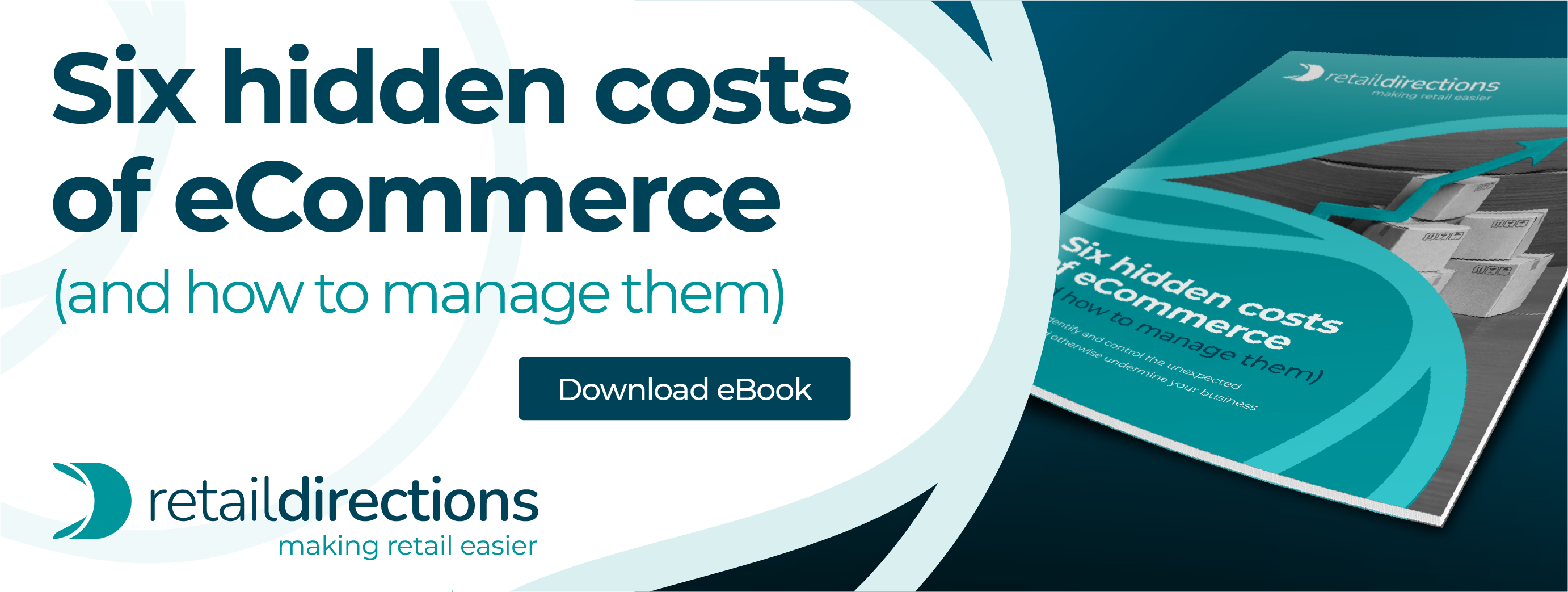How retailers are getting blindsided by the hidden costs of eCommerce
Many retailers have experienced online sales booms during the pandemic as customers flocked online, denied the ability to shop in stores during lockdowns.
Brands and retailers for whom eCommerce was either just a minor side-line or a strategy still in the planning, had to move fast to transform their business into a true omnichannel Connected Retail enterprise.
Driven by the pandemic, the changes in consumer buying behaviours meant that orders flooded in, and retailers could congratulate themselves on their online success. Some now believe that the upsurge might be permanent.
But will it? Retailers must now ask themselves two key questions:
- Is the change in customer behaviour and the sales mix structural or cyclical? In other words, when retail begins to normalise, will customers re-engage with brick-and-mortar stores?
- Irrespective of whether the online sales volume will stay high or revert to pre-pandemic levels, how much net profit does the business really make from online sales?
Achieving a clear understanding of the above isn’t easy. The speed with which retailers had to accelerate their online strategies - as they sought to make up for lost sales and capture the extended ecommerce audience - meant there was little time for planning and analysis.
Online turnover and gross profit were the most common measures of success, and these looked good, encouraging further expansion online. Retailers have also been dealing with a literally captive audience, which both distorted consumer behaviour and their buying patterns.
With over a year of experience in this new, strange environment, some retailers are finally beginning to properly examine their omnichannel processes and numbers. For others that full cost/benefit and process analysis has still to come.
Identifying hidden costs through analysis
Once such analysis starts, several patterns emerge. The most obvious one relates to the visibility of real cost. When operating brick-and-mortar stores, retailers know quite precisely what they are doing. They are dealing with a clean-cut cost structure, years of understanding around margins and net profit and how best to optimise business operations.
For eCommerce, true costs need in-depth analysis and retailers newer to the channel don’t always have a clear-cut model to assess the real, net profitability. If the customer behaviour changes we have witnessed do turn out to be structural – i.e., permanent – then it’s even more important that retailers have a full understanding of the true cost of doing business in all channels. If not, they won’t be able to make informed decisions and could put their futures at risk.
There can be many hidden costs related to online business that retailers must be aware of. For instance, when physical stores get replenished, the warehouse cost are usually included in the cost of goods (applied as an oncost for the retail outlet), but when picked individually to fulfil a customer order, the warehousing cost of an item goes up substantially and often is not attributed directly to the orders.
Similarly, online returns - which can be as high as 40% of online sales - can also pose further challenges for the retailer. Meanwhile, unlike brick-and-mortar stores, where staff can engage directly with customers, online requires a separate customer care team - yet another cost to consider.
And of course, there are the external costs of delivery too, where retailers have seen delays and increasing costs due to the pressure that transport and delivery providers have faced during the pandemic.
Why it’s now time to check the numbers
While speed of response and agility have been heralded over the last 18 months, the pandemic denied retailers the opportunity for careful planning, which meant that some retailers went into eCommerce without really thinking it through. This means that as long as they operate this part of their business with limited understanding, the hidden costs will continue to surface and bite, driving down margins and profits as a result.
Given that by now most retailers have settled into a new ‘normal’, it’s essential that they take the time to look more closely at their businesses, fully examine their real costs across all channels and ensure everything is accounted for – particularly online.
Only once they have done that can they pat themselves on the back and say that they made a success of eCommerce, both during the pandemic and after.
For practical advice on how to identify and manage the hidden costs of eCommerce download our ebook: Six Hidden Costs of eCommerce (and How to Manage Them)

%20(600%20x%20400%20px)%20(1600%20x%20500%20px)%20(1200%20x%20500%20px)%20(1200%20x%20700%20px)%20(1200%20x%20700%20px)-1.png)





.png?width=352&name=1900x800%20(1900%20%C3%97%20800%20px).png)